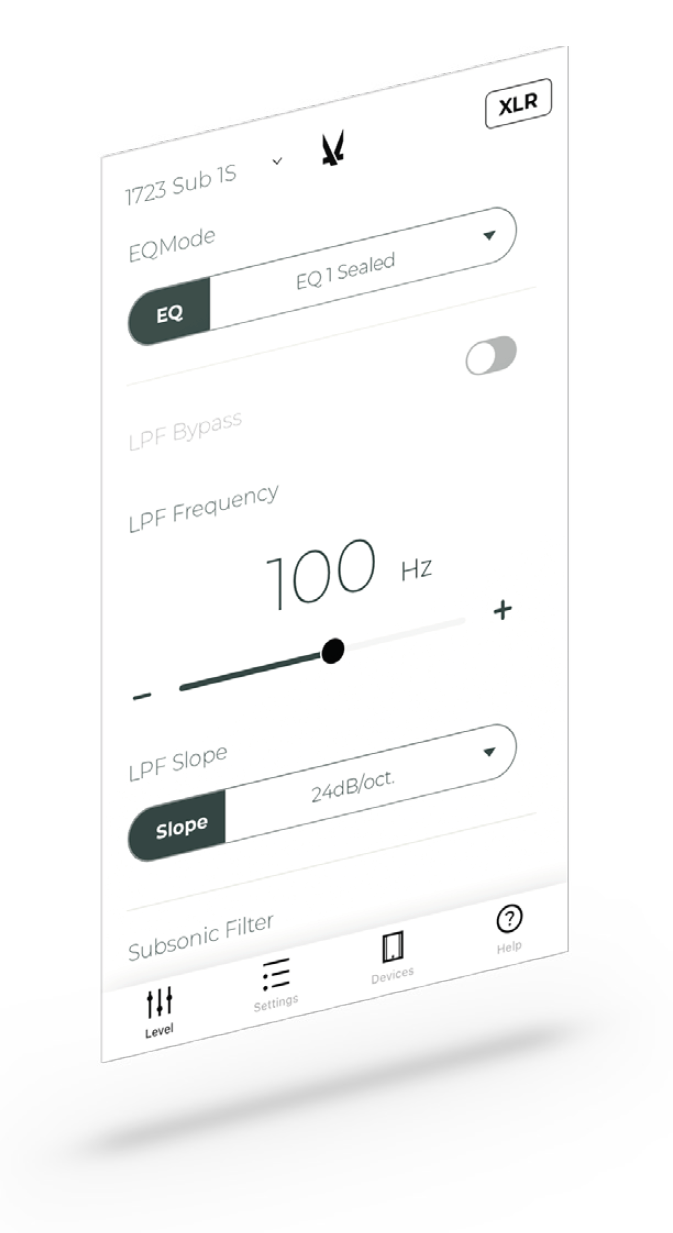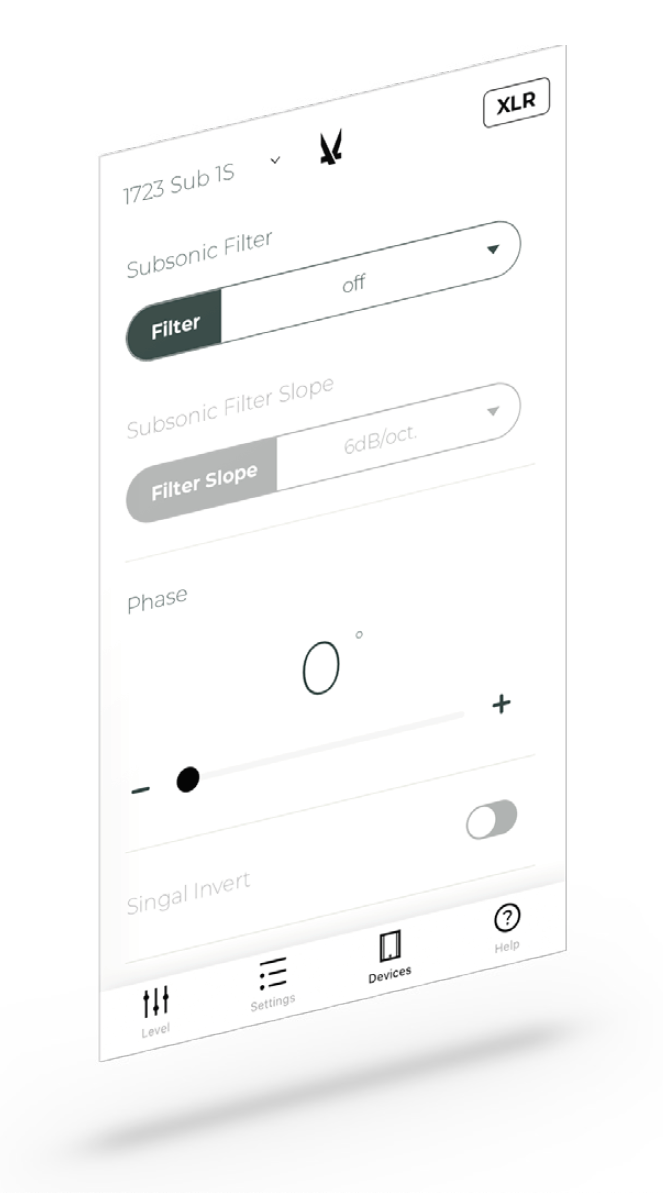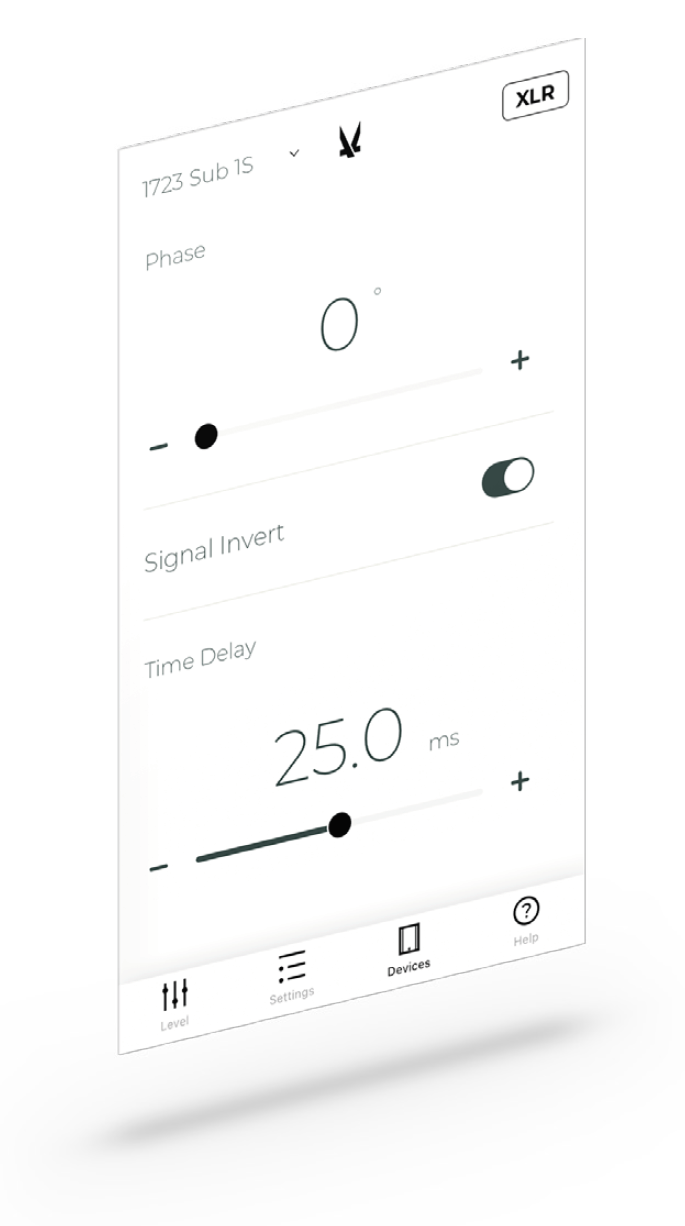App – How to Set Up Crossover Menu
EQ Mode – EQ1, EQ2 & EQ3
3 modes for sealed subwoofers, 6 modes for vented subwoofers as they can be used in vented or sealed mode.
- EQ1 – Gives a flat ground plane response to under 20 Hz, which will give great emphasis on the deepest bass in-room. For movies this can be especially appealing. We recommend this setting for larger rooms.
- EQ2 – Half an octave above the EQ1 setting, so for example if on EQ1 the subwoofer has a +-3dB point of 16Hz, the EQ2 setting will have a +-3dB point of 24Hz. For medium large rooms and/or to suit your personal listening style, the EQ2 setting can be beneficial. Typically, EQ2 setting will sound “faster” than EQ1 as it has a lack of output in the deepest bass which will give the bass a heavier sound to it.
- EQ3 – One octave above the EQ1 setting, so for example if on EQ1 the subwoofer has a +-3dB point of 16Hz, the EQ3 setting will have a +-3dB point of 32Hz. We recommend this setting for smaller rooms and/or to get a “faster”, more musical and punchy sounding bass.

LPF Bypass
On/Off. If On is selected, then the Low Pass Filter will be disabled. For Home Cinema use, where an AVR is used we recommend LPF Bypass – On. For stereo users you may leave this setting Off, so you can adjust the Low Pass Filter under the next step.
LPF Frequency
The Low Pass Frequency is adjustable from 30 Hz to 160 Hz in 1 Hz increments. The number chosen here means the frequencies above will be filtered away to avoid high tones coming from your subwoofer – nobody wants to hear Diana Krall’s voice through the subwoofer anyways…
LPF Slope
The Low Pass Frequency Slope means at which rate the frequencies should be tapering off, from the LPF Frequency point chosen. It is adjustable from 6dB/Oct to 24dB/Oct with 6dB increments. So, if you already set the LPF frequency to 100Hz, then setting the LPF Slope to 12dB/Oct will ensure that the signal has 12dB lower output at one octave above 100Hz (one octave above 100Hz is 200Hz).
Subsonic Filter
Selectable subsonic filter settings, that will filter away the deepest frequencies. Selectable from 12 Hz to 31 Hz. In off mode the amplifier has an internal subsonic filter at 10 Hz to prevent instabilities in the power supply. Adding the subsonic filter will ensure the subwoofer has less excursion in the deepest bass, and typically when filtering away some of the deepest bass it will sound even “tighter”.
Subsonic Filter Slope
The Subsonic filter slope means at which rate the frequencies should be tapering off, from the frequency point chosen. It is adjustable 6dB/Oct or 12dB/Oct. So, if you already set the subsonic filter frequency to 20Hz, then setting the slope to 12dB/Oct will ensure that the signal has 12dB lower output at one octave under 20Hz (one octave below 20Hz is 10Hz).
Phase
Adjustable from 0-180 degrees. We recommend leaving the phase at 0 degrees when using an AV-Receiver/Processor with time alignment (speaker distance) feature. For music setups the phase needs to be adjusted so the subwoofer blends with the front speakers.
Pro tip; Have a friend/wife/mom help adjusting the phase while you sit in your listening position. Play some music with a steady bass beat, and when you hear the most amount of bass, the phase is correctly adjusted.
Signal Invert
This feature inverts the signal, which means the same as 180 degrees phase, however, this is “true” 180 degrees at all frequencies. Phase adjusting above will shift somewhat with frequency.
Time Delay
Adjustable from 0 to 50ms in 0.25ms increments. This feature comes in handy when you have several subwoofers in the setup and want to combine them on a single output from your source so that they have the same delay. We recommend measuring the distance to the subwoofer furthest away and adding delay to the remaining subwoofer(s) so that their delay is equal to the difference in distance between it and the furthest away subwoofer.
Example: 2 subwoofers in the same room, one subwoofer is placed 4 meters away from the listening position, and the other is placed 3 meters away. The difference in distance in this example is 1 meter. So you want to delay the signal to the closest subwoofer by 1 meter (1 / 343 * 1000 = 2,915 ms). So in this case the closest setting will be 3ms.
Formula:
Meters / Speed of sound (343 m/s in room temperature) * 1000 = time in ms.
Feet / Speed of sound (1125 f/s in room temperature) * 1000 = time in ms.











